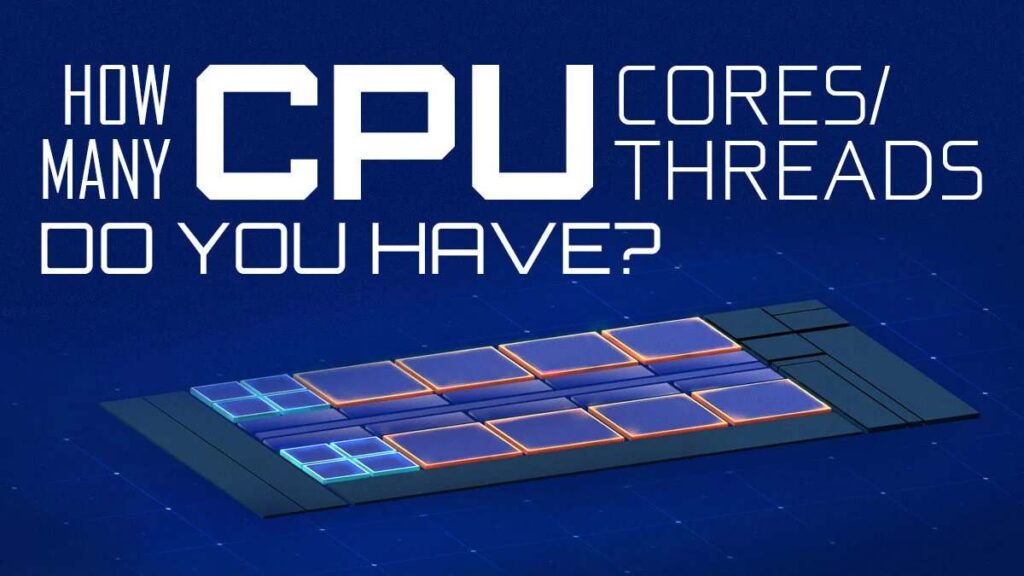A quad-core processor handles up to four threads normally. With Hyper-Threading or SMT, it can manage up to eight threads simultaneously.
What Are Threads and Why Are They Important
Threads are the smallest units of execution within a computer program. They allow a processor to divide a task into smaller, parallel operations. This division enhances efficiency, as the processor can work on multiple threads at once, speeding up overall task completion.
Threads play a significant role in multitasking, enabling smoother operation of multiple applications or processes. In essence, threads help a computer manage complex operations more effectively, contributing to better performance and responsiveness.
A quad-core processor typically handles 4 threads at once, but with hyper-threading technology, it can manage up to 8 threads simultaneously. This boosts multitasking and performance in tasks like gaming or video editing. Modern quad-core processors efficiently balance workloads across threads for smoother operations. The actual thread handling depends on the processor’s architecture and software support.
The Basics of Core and Thread Count:

A processor’s core count and thread handling capabilities are critical for understanding its performance. Each core in a processor can handle one thread at a time, so a quad-core processor, in its basic form, can manage four threads simultaneously.
This means it can process four tasks or operations concurrently. However, modern processors often employ technologies like Hyper-Threading or Simultaneous Multithreading, allowing each core to handle multiple threads, thus boosting multitasking and overall efficiency.
Types of Processors and Their Thread Handling:
Processor types vary in their core and thread handling capabilities. Single-core processors can handle one thread at a time, which limits multitasking. Dual-core processors double this capacity, managing two threads simultaneously. Quad-core processors, with four cores, handle up to four threads concurrently.
Advanced processors, such as those with six or eight cores, further increase this number, allowing even more threads to be processed at once. Understanding these variations helps in selecting a processor suited to specific needs.
Understanding Hyper-Threading Technology:
Hyper-Threading Technology (HTT) is an Intel innovation that allows each core to handle two threads simultaneously. This feature enhances multitasking by enabling a single core to manage multiple threads at once, effectively doubling the number of threads a processor can handle.
For example, a quad-core processor with HTT can handle up to eight threads concurrently. While HTT improves performance, it also has limitations, such as not being beneficial for all applications, particularly those that do not support multiple threads effectively.
Exploring Simultaneous Multithreading (SMT):
Simultaneous Multithreading (SMT) is AMD’s counterpart to Intel’s Hyper-Threading. Like HTT, SMT allows each core to manage two threads simultaneously, effectively doubling the number of threads a processor can handle.
For a quad-core processor with SMT, this means handling up to eight threads at once. SMT improves multitasking and processing efficiency, though it may not always lead to performance gains in every application. It’s crucial to understand the specific benefits and limitations of SMT for different computing tasks.
Comparing Thread Handling Across Different Processor Brands:
Different processor brands implement thread handling in various ways. Intel’s Hyper-Threading Technology enhances multitasking by allowing each core to process two threads concurrently. AMD’s Simultaneous Multithreading achieves similar results with its own approach.
Both technologies aim to improve performance by increasing the number of threads a processor can manage. However, the effectiveness of these technologies can vary based on the specific architecture and design of each processor brand, influencing overall computing efficiency and performance.
Also read: List of Socket 1155 Processors – A Comprehensive Guide!
Real-World Applications of Thread Management:
Thread management impacts various real-world computing scenarios. For everyday multitasking, such as running multiple applications simultaneously, processors with higher thread counts perform better. In gaming, modern titles often utilize multiple threads to enhance performance and responsiveness.
For productivity and creative tasks, such as video editing or 3D rendering, processors with more threads handle complex operations more efficiently. Specialized use cases like virtualization and scientific computing also benefit from processors capable of managing numerous threads.
Impact of Thread Management on Computer Performance:
Thread management significantly affects computer performance. In multitasking scenarios, processors that handle more threads can manage multiple operations concurrently, leading to smoother performance and faster task completion. In single-threaded applications, which do not benefit from multiple threads, performance improvements might be less noticeable.
Overall, effective thread management contributes to system responsiveness, enabling more efficient operation of various applications and processes. Understanding how thread management impacts performance helps in optimizing computing experiences for different tasks.
Choosing the Right Processor for Your Needs:

Selecting the right processor involves evaluating its thread handling capabilities based on your computing needs. For everyday use, a quad-core processor with Hyper-Threading or Simultaneous Multithreading is generally sufficient. Gamers may benefit from processors with more cores and threads to handle demanding games efficiently.
Professionals working with video editing, 3D modeling, or other intensive tasks might require processors with higher core and thread counts for optimal performance. Assessing these factors ensures you choose a processor that meets your specific requirements.
Future Trends in Processor Technology:
The future of processor technology includes advancements in multi-core and multi-threading capabilities. Emerging technologies aim to further enhance thread management, improving performance and efficiency.
Innovations like increased core counts, advanced multithreading techniques, and integration with other technologies will shape the evolution of processors. Staying informed about these trends helps anticipate how future processors will handle threads and improve overall computing performance, ensuring you remain updated with the latest technological developments.
FAQ’s:
1. What is a thread in a processor?
A thread is a small unit of execution within a process that allows a processor to handle multiple tasks at once.
2. How many threads can a basic quad-core processor handle?
A basic quad-core processor can handle up to four threads simultaneously, one per core.
3. What does Hyper-Threading Technology do?
Hyper-Threading Technology allows each core to handle two threads at once, enabling a quad-core processor to manage up to eight threads.
4. What is Simultaneous Multithreading (SMT)?
SMT is a technology similar to Hyper-Threading that allows each core to handle two threads simultaneously, also enabling a quad-core processor to manage up to eight threads.
5. How does thread management affect computer performance?
Effective thread management improves multitasking capabilities and performance in applications that support multiple threads, leading to smoother and faster computing experiences.
Conclusion:
In summary, a quad-core processor typically handles up to four threads simultaneously, but technologies like Hyper-Threading and Simultaneous Multithreading can increase this number to eight threads. Understanding how many threads a processor can handle is crucial for optimizing computing performance and multitasking capabilities. By considering your specific needs and the impact of thread management, you can make informed decisions about the best processor for your tasks, ensuring efficient and effective computing experiences.




